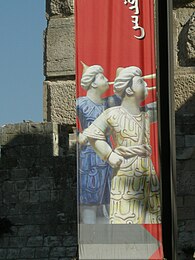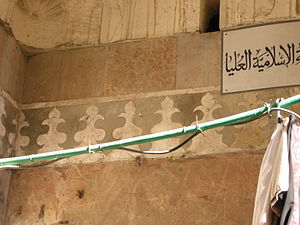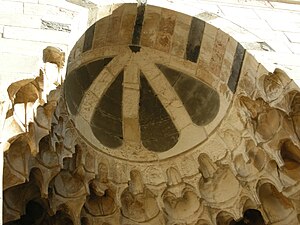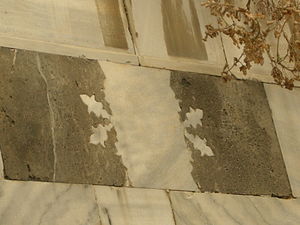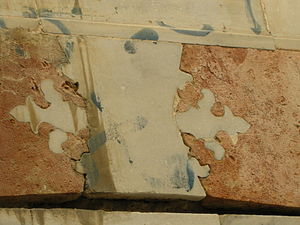User:Yoavd/photos/Mamluk remains in Jerusalem
Mamluk remains in Jerusalem
A mamluk (Arabic: مملوك (singular), مماليك (plural), "owned") was a slave soldier who converted to Islam and served the Muslim caliphs and the Ayyubid sultans from the 9th to the 16th centuries. They were mainly Kipchak Turks. While Mamluks were purchased, their status was above ordinary slaves, who were not allowed to carry weapons or perform certain tasks. Mamluks were considered to be “true lords,” with social status above freeborn Egyptians. Over time, they became a powerful military caste often defeating the Crusaders. On more than one occasion, they seized power for themselves; for example, ruling Jerusalem in the Mamluk Dynasty from 1250–1517.
The architectural identity of Mamluk religious monuments stems from the major purpose that individuals erected their own memorials, therefore adding a high degree of individuality. Each building reflected the patron’s individual tastes, choices, and name. Mamluk architecture is oftentimes categorized more by the reigns of the major sultan, than a specific design. Interestingly, the mamluk elite were often more knowledgeable in the art of buildings than many historians. Since the Mamluks had both wealth and power, the overall moderate proportions of Mamluk architecture—compared to Timurid or classical Ottoman styles—is due to the individual decisions of patrons who preferred to sponsor multiple projects. The sponsors of the mosques of Al-Zahir Baybars, al-Nasir Muhammad, Faraj, al-Mu’ayyad, Barsbay, Qaytbay and al-Ghawri all preferred to build several mosques in the capital rather than focusing on one colossal monument. Patrons used architecture to strengthen their religious and social roles within the community.
-
A drawing of Mamluk soldiers holding trumpets on their daily walk in Jerusalem
-
The entrance to the Madrasa
-
Mixing two different stones to create a geometrical pattern
-
Built in 1315 - Madrasat Tankiziya at the end of the Shalshelet street
-
Suk Alkatanin , as it was in the 14th century.
-
Österreichische Hospiz zur Hl. Familie
-
View from the roof of the Austrian hospice
